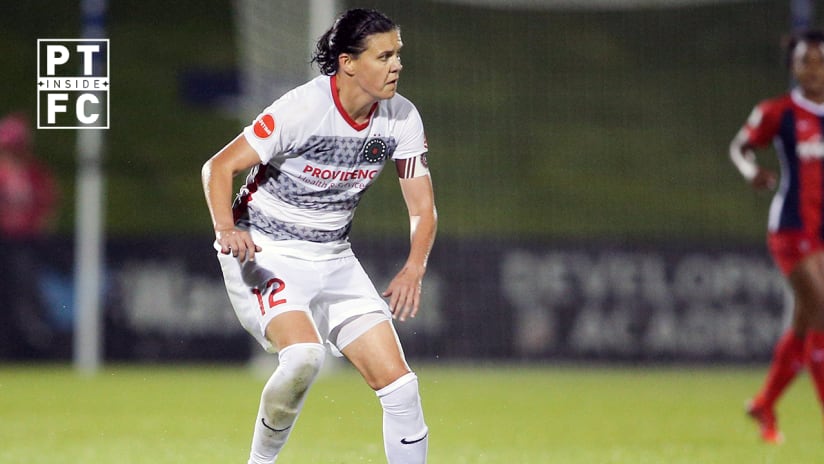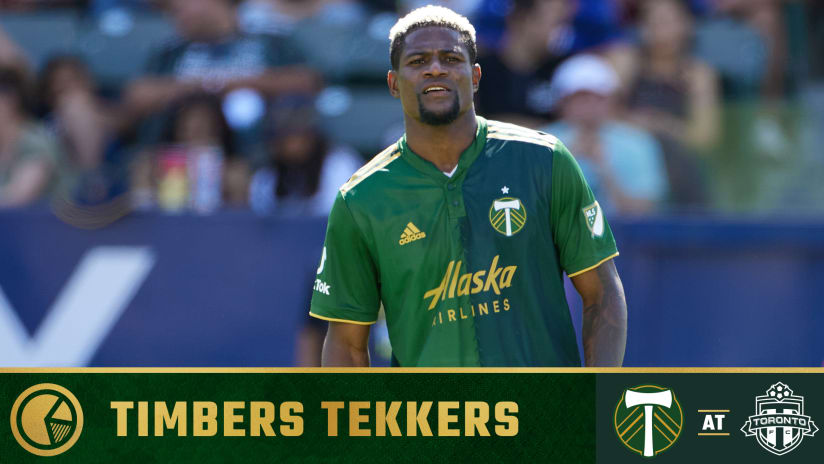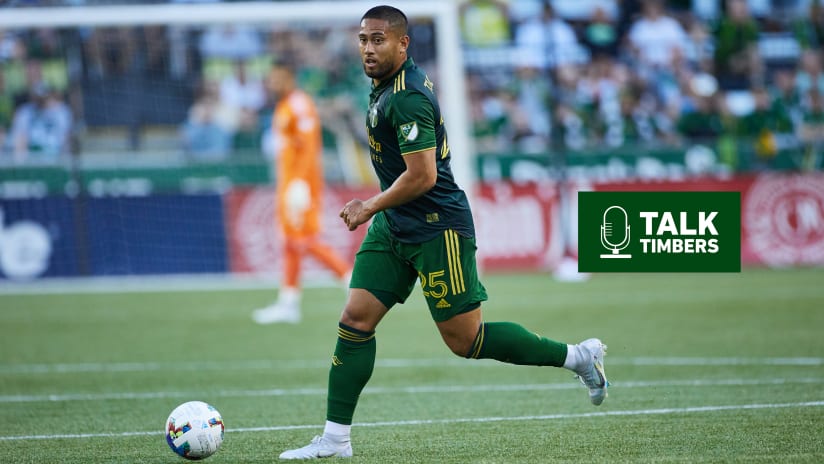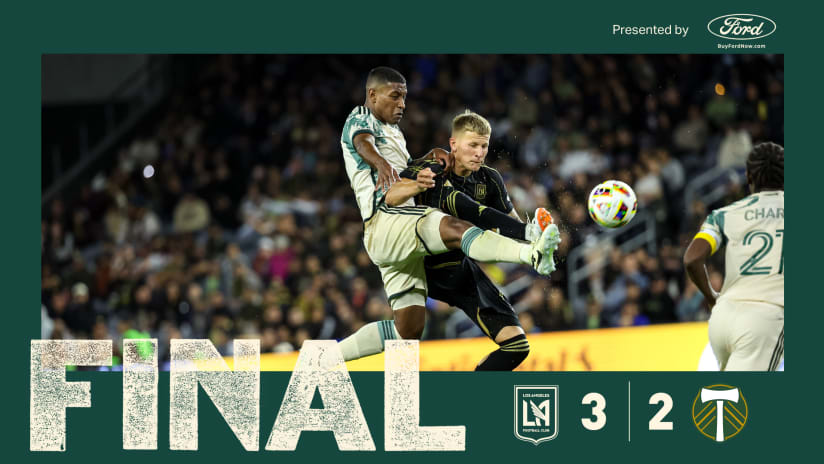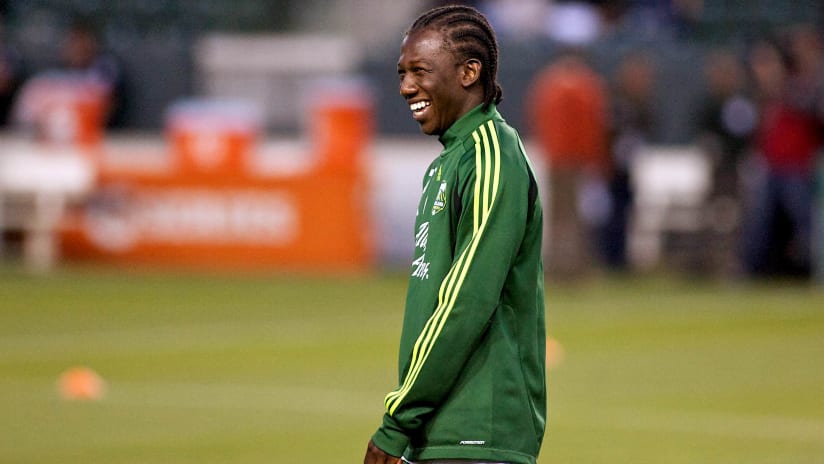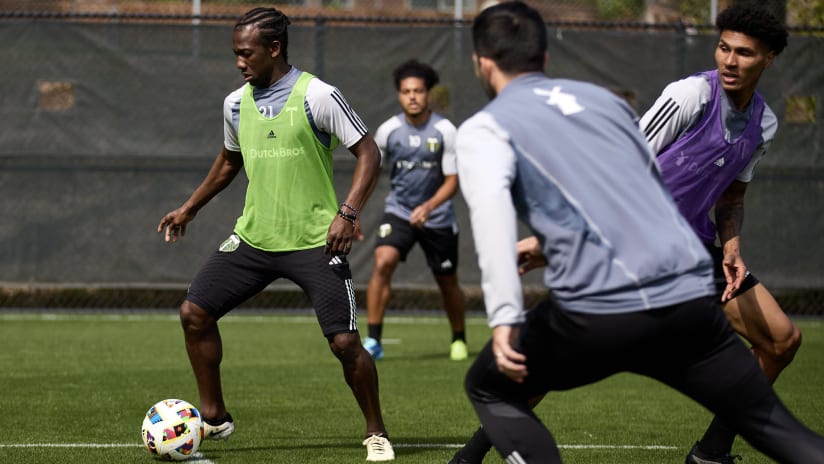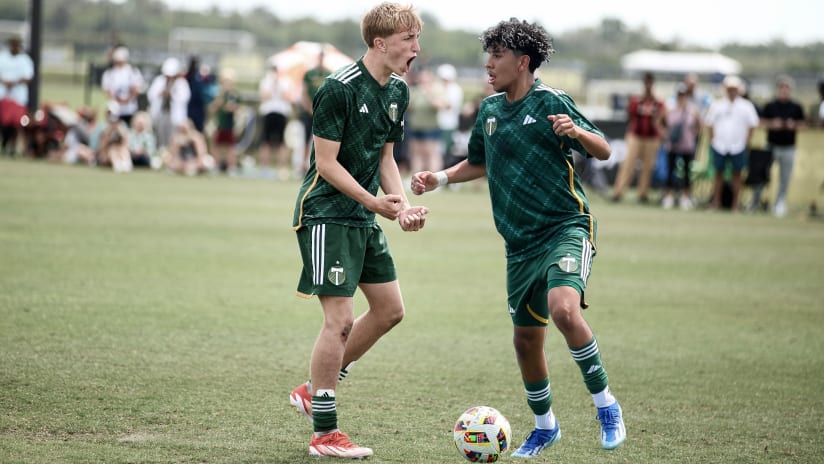Over the last month, much of this analytical space has been devoted to Thorns FC’s attack, explaining why underlying numbers like shots, shots on target, passes and final third entries said Portland’s attack was fine, even if the team wasn’t getting on the scoreboard as much as they’d want.
For fans of bottom lines, that may seem like a paradox. After all, how can an attack be good if it’s not accomplishing the end goal? But as research has shown and time has borne out, given enough games, the vast majority of teams tend to produce goals in proportion to the quality and quantity of their chances. A team can have bad luck over one, two, even five games, but over enough time, everything tends to even out.
All of which makes Saturday’s formation for Portland in their 1-0 win over the Washington Spirit all the more interesting. When the Thorns took the field against Washington, it did so in the 4-2-3-1 formation that almost reversed a two-goal deficit a week earlier against the Orlando Pride. If everything was fine with the 3-4-1-2 the team has used over the last year, why not just be patient and see the attacking slump out?
Let’s hold on that question for a minute and talk about what the switch entailed. Throughout the first eight games of their season, the Thorns had used the same formation they switched to in the middle of 2017, one that helped deliver the club’s second NWSL title. That formation, compared to what the team was using before, …
- allowed all of Emily Menges, Emily Sonnett and Katherine Reynolds to play their best positions,
- took advantage of two wide talents capable of endline to endline contributions,
- let Lindsey Horan get deeper, and on the ball more,
- also moved Christine Sinclair from forward to attacking midfield, getting her on the ball more, and
- allowed a set of industrious forwards to execute a pressing scheme capable of disrupting opponents.
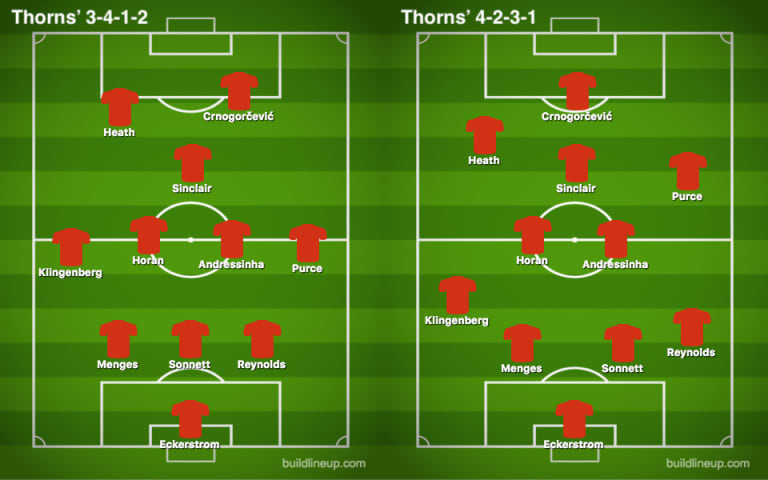
Then you have the 4-2-3-1, a formation which, rudimentarily, sacrifices a central defender and a striker to use two wingers. You lose a numerical edge at the back and don’t have a two-front to press with, but you gain extra players in the wide areas. Having wingers stationed on the flanks to combine with fullbacks gives you more options to attack wide. It also, as your fullbacks advance, allows you to send wide players inside to offset numbers and find space in the middle.
At least, that’s the theory, and Thorns head coach Mark Parsons said as much on Saturday, saying “it was really, really cool to get Tobin (Heath) on the ball as much as we did.” In the 68th minute, that cool factor translated into the game’s only goal when, from a wide position, Heath played a ball across for the team’s lone striker, Ana Crnogorčević, whose run opened up the far post for the team’s other wide attacker, Ellie Carpenter.
The new look helped the Thorns snap a five-game winless streak, making it tempting to cast the change in terms of a needed and timely solution. But the “new” look is something that the team had already been using in other games, even beyond the previous switch against Orlando. Right-wing back Midge Purce was often taking up attacking positions late in games. Sometimes she did that as one of the two in the 3-4-1-2, but occasionally, it was as the right wing in the 4-2-3-1.
According to Parsons, the origins of these switches dates back long before his team’s recent struggles. It dates back before the start of the 2018 season, and even before the team acquired Purce in the draft that dispersed the Boston Breakers’ players.
“I sat down with some senior players in January, having some random coffees,” Parsons recalled. “They knew that we were going to start with [the 3-4-1-2], and they knew we were going to progress into [the 4-2-3-1]. And they knew that we were going to need both or variations of both to be successful this year.”
It’s a goal Parsons has talked about in previous seasons, too. As the Thorns switched to their three-center back approach last season, Parsons touted his team’s ability to play two ways. That they didn’t change right away spoke to the league’s slow response to the 3-4-1-2, but that response was bound to come.
Enter 2018. Particularly in the second game against Orlando, we’ve seen teams bulk up in midfield to match the power of Horan and Sinclair. Once that happens, the Thorns not only lose part of their edge in the middle of the park but, playing without wingers, don’t have the firepower they need on the flanks to work around them. Hence the need to be more dangerous in wide areas. Hence the move back to the 4-2-3-1.
“We didn’t know until we saw it and we got training and we got games, we didn’t know how quick we would go to 4-2-3-1,” Parsons explained, talking about his team’s planned tactical evolution. The new looks teams are giving the Thorns have accelerated Parsons’ plans.
“We know that we’re stronger in areas and weaker in others in this shape,” he explained. “What do we really need to be strong in against Utah? What needs to happen? We have two shapes that give us different advantages or disadvantages.”
Any discussion of formations brings about a question as old as formations themselves: How much do they matter? Left-wing back Meghan Klingenberg spoke to that tension on Tuesday, saying, “I honestly don’t think that formations are such a big deal when it comes to winning and losing. I think some formations suit individual personnel and what you have [on] your team [that’s] better than others.
“I think that the four-back is really well-suited to our individual personnel, and last year, maybe the five-back was a little more suited to who we had.”
But if formations don’t matter, why do coaches ever change them? Perhaps, as Klingenberg alludes, you change formations because the personnel changes. But the Thorns personnel didn’t change between the Orlando and Washington games. What’s more, according to the underlying numbers, Portland had every reason to think their 3-4-1-2 formation would eventually start producing results.
“People say shape doesn’t matter, it’s all about principles,” Parsons says, chiming in on the formation debate, “and I always disagreed. Not disagreed – that [phrase is] fair to how people say it. For me, position of players occupying different spaces, do you have two people occupying wide areas? Do you have one; two people; three people; one person (in different spaces)? Where you place people can have a big influence on things.”
Saturday’s goal is a great example. If the Thorns aren’t playing with two wide attackers, Heath may not be in position to attack the space into which Horan played the move’s first ball. Even if she is, Carpenter is unlikely to be high enough on the field to make her far-post run in time. With a 3-4-1-2, the Thorns would probably have had two attackers leading that transition, one fewer than it needed to finish that goal.
As much as the actual execution of that goal, the players’ underlying confidence may be more important to understanding why Parsons has changed approach. Before the switch, the attack’s secondary numbers were there, but the abandon Portland showed on last weekend’s goal wasn’t. Just as Klingenberg hinted she feels the 4-2-3-1 is a better fit for the team, right now, Mallory Weber had similar thoughts after the Orlando game, saying “I think it fits our personnel a little bit better.”
It’s a psychology Parsons doesn’t intend to fight. Instead, he wants to build off what his squad feels most comfortable executing, all while trying to preserve the team’s long-term goals.
“Whatever the team needs to feel good … whatever they want to believe, let’s build off that,” Parsons said. “At the same time, what’s hard is, it’s always the balance. What you know that [the players] need to do maybe doesn’t feel the best (to them).”
For now, expect the 4-2-3-1 to persist. Even if the team’s 10-shot performance in Washington hints there’ll be a learning curve. Even if the personnel has changed notably from when the team was playing it last season.
But also expect the 3-4-1-2 to play a meaningful part. After all, even though the league was slow to adapt to last year’s change of formation, there’s no guarantee the NWSL will be as forgiving with this year’s approach.

